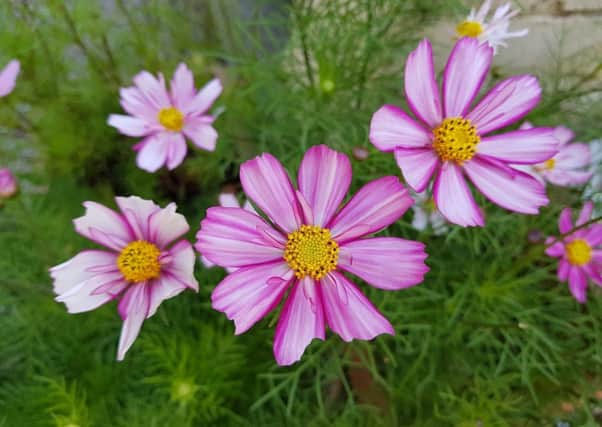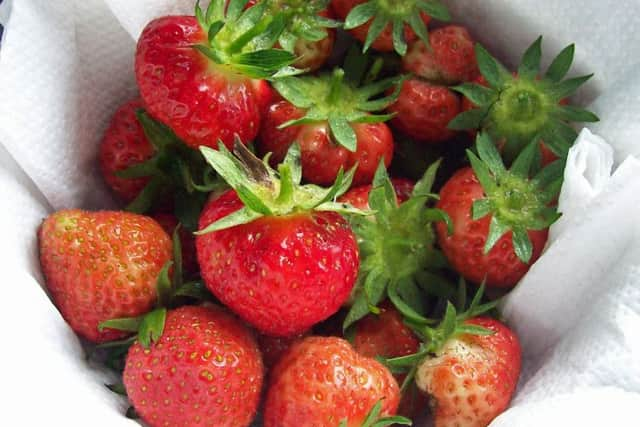How to look after your plants when you go on holiday


I’m missing out the two most obvious solutions, as we’re not all made of money and there’s a water shortage (hiring a gardener and installing an automatic watering system).
Here are some ideas for the outside garden:


l Watering plants thoroughly and less frequently. If you do this from planting them out, they’ll develop deep, searching root systems. Frequent, insufficient watering leads to shallow rooting and plants are much more susceptible to drought.
Advertisement
Hide AdAdvertisement
Hide Adl Choose plants wisely. Drought-tolerant, perennial varieties with hairy or silver leaves, such as Stachys, Verbena, Alchemilla, succulents, Salvia and Mediterranean-style shrubs and sub-shrubs are perfect. Half-hardy Pelargoniums, Cosmos, Californian poppies, Gazania and Osteospermum are excellent choices for splashes of colour.
l Mulch. An early season 2-3 inch layer of organic material or gravel prevents evaporation and discourages weeds, especially for serial wilters like hydrangeas and clematis.
l Weed. A day or so before you leave, weed your beds to avoid water competition.


The day before you go:
l Give your plants a good soaking. Do this early morning or late evening to avoid excess evaporation. Bear in mind newly planted shrubs and roses need a gallon at a time!
Advertisement
Hide AdAdvertisement
Hide Adl Mulch. After a thorough watering, mulch with grass clippings, compost, pebbles, gravel etc. Avoid plastic, as rain won’t get to soil level.
Safeguarding your fruit and vegetables:
l Pick produce that’s just started to ripen, such as tomatoes and strawberries, and store in the fridge.
l Keep plants fruiting. Pick young beans, peas and courgettes. If they mature, the fruiting mechanism in the plant will ‘switch off’.
l Give up salads. Green leafy salad crops are most likely to be lost – give what you can away and shade the rest to try and stop them running to seed.
Advertisement
Hide AdAdvertisement
Hide Adl Cool down the greenhouse. Apply extra shading and leave it well ventilated.
If you have a willing helper, don’t assume others know as much as you. Keep watering duties to the absolute minimum.
Next week, I’ll be looking at caring for houseplants and container plants outside while you’re away.
GET IN TOUCH
l For more information, plus cook what you grow, recipes, environmental news and more, log on to the website at www.mandycanudigit.com – which is also now smartphone friendly.
Advertisement
Hide AdAdvertisement
Hide AdYou can also follow Mandy on Twitter @MandyCanUDigIt or you can like me on my Facebook page at Mandycanudigit
JOBS TO DO THIS WEEKEND
Deadhead plants such as Dahlia and Penstemon and bedding to prolong the display well into early autumn.
Hardy geraniums can be cut back a little to remove tired leaves and encourage a new flush of growth.
Buy or order spring-flowering bulbs. Some bulbs can be planted now, such as Colchicum and Madonna lilies (L. candidum).
Advertisement
Hide AdAdvertisement
Hide AdContinue to deadhead roses, to extend flowering into early autumn. Spindly specimens that have lost leaves can be cut back a little further when deadheading, to encourage new growth.
Many conservatory and greenhouse pests will be active. Check plants regularly for signs of glasshouse whitefly, leafhopper, red spider mite, mealybugs and scale insects. Clean up fallen leaves and spilt compost from benches and floors to prevent pests and diseases spreading.
Keep an eye on aquatic and marginal plants, removing faded flowers and yellow leaves, and cutting back where necessary.
Water sweetcorn, peppers, cucumbers, aubergines and tomatoes regularly and feed with high-potash food.
Advertisement
Hide AdAdvertisement
Hide AdRemove lower leaves on cordon tomatoes and pinch out the top of plants to concentrate the growth into the fruit that has formed – 5-6 trusses per plant.
Pinch out the tips of runner bean plants once they reach the top of their support.
Check for cabbage white butterfly eggs under brassica leaves.
Get rid of diseased and dead foliage around your vegetable crops to stop pests and diseases spreading.
Clear weeds, as they compete with crops for nutrients and water.